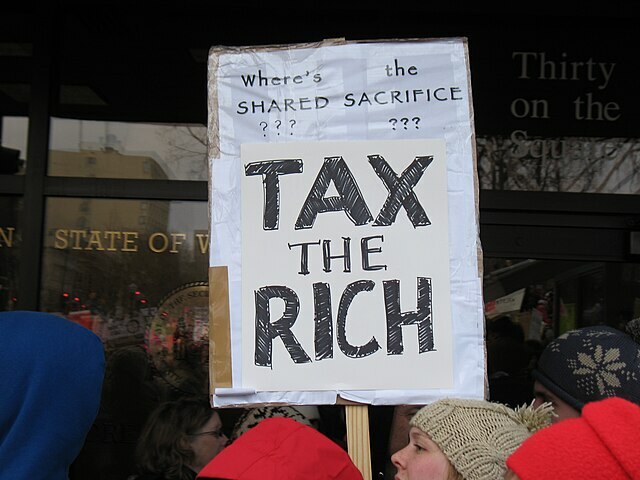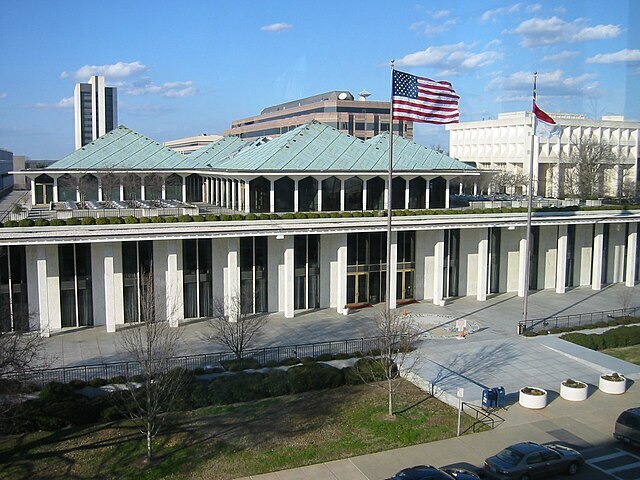For much of the 1990s, a growing number of local governments in North Carolina have complained of inadequate revenue and an inordinate reliance on local property taxes to fund local programs, particularly schools and social services. While dozens of counties have sought permission from the state in recent years to levy new taxes, the issue has taken on greater importance in the 2001 session.
There are three main reasons for this. One is the state’s own budget woes. Gov. Mike Easley decided earlier this year to withhold $95 million in tax reimbursements to localities to help balance the 2000-01 state budget. Although a final decision to use the funds has not yet been made, most local governments have had to adjust their 2000-01 budgets as if the funds will not be received. Furthermore, expecting the state to make a similar decision in 2001, many local governments are preparing their 2001-02 budgets as if some or all of the reimbursements won’t be available.
Secondly, a dramatic upsurge in Medicaid expenditures threatens to add millions of dollars to many county budgets. North Carolina, unlike most states, requires counties to share the cost of Medicaid payments. After two years of relatively modest growth, the Medicaid program is experiencing a cost explosion. Furthermore, because the county funding requirement is 15 percent of the non-federal share and Washington has recently reduced its proportion of North Carolina Medicaid funding, counties are now shouldering a higher share of the cost (5.6 percent) than ever before.
Finally, public school spending is growing faster than other county responsibilities. Enrollment in the state’s largest systems has grown rapidly during the 1990s, while completion of the state’s four-year plan to raise teacher salaries by $1 billion has put pressure on local districts to match the increased spending with similar hikes for county-funded positions and teacher supplements.
Citing these and other factors, many counties are debating unprecedented property tax hikes. Modest to large increases are expected to pass in Mecklenburg, Gaston, Forsyth, and Durham, just to name a few.
In the General Assembly, a new plan to address both state and local budget pressures is gaining attention. Advocated by House Appropriations Co-Chair David Redwine (D-Brunswick), among others, the idea would be to give local governments the authority to levy an additional half-penny or penny in sales taxes in exchange for the elimination of $333 million in reimbursements for local taxes repealed more than a decade ago.1 In effect, the plan would raise revenue for both the state and localities. If the legislature allowed a half-cent tax increase on non-food purchases, it would secure $333 million in additional availability to fund the state budget while localities would pocket $82 million by FY 2002-03. A full one-cent sales tax increase would give localities about $500 million to spend in FY 2002-03.2
Are Local Governments Starved for Funds?
One assumption behind this proposal is that local governments have no way of meeting their needs other than raising taxes. But cities and counties have a variety of tools already available to them to deliver needed services using existing revenues. These include competitive contracting, changes in salary and benefit policies, public-private partnerships, and setting better priorities. According to By The Numbers 2001, a report published by the Center for Local Innovation, N.C. counties show a wide variance in local costs. In 1999, for example, Durham County residents paid 6 percent of their income in city and county taxes and fees one of the highest rates in the state. In neighboring Wake, residents paid only 4 percent of income to local governments. The report also revealed that localities experienced healthy increases in revenue during the 1990s. The median county saw combined local revenues rise from 3.6 percent of personal income in 1992 to 4.1 percent of income in 1999.3
Furthermore, if local governments do need additional revenues with which to fund core local functions such as public schools or public safety, the most appropriate funding mechanism is a property tax increase, not additional taxing authority. Unlike sales taxes, property taxes are highly visible for homeowners and businesses, thus promoting accountable government. Because all residents pay property taxes, either directly (through mortgage payments or annual billing) or indirectly (through apartment rents and the purchase of goods and services from taxed businesses), the property tax spreads the burden of government more equitably than the sales tax, which applies to goods but not to services and is thus regressive. For many residents, property taxes are also deductible from their federal income taxes again unlike sales taxes.
If the General Assembly believes that additional assistance to local governments is warranted, then it should consider alternatives to raising local taxes. For example, the state could assume greater responsibility for Medicaid, over which counties have little control, anyway. Reducing the counties’ share to 2.5 percent would save them nearly $200 million next year to address local needs. Other options include providing greater budget flexibility to school systems; raising the state cap on charter schools, which receive county funds for operating expenses but not facilities; and increasing the amount of corporate income taxes earmarked for school construction in those counties with the greatest fiscal challenges. Any cost to the state budget from these changes should be offset by cutting corporate welfare programs, reforming the Medicaid program, reducing university subsidies, and using other ideas contained in the Locke Foundation’s Changing Course IV alternative budget.4
By Erik Root, Policy Analyst, and John Hood, President
Notes
- David Rice, “Budget bedevils divided House,” The Winston-Salem Journal, June 10, 2001.
- Local fiscal impact projected from 1999-2000 sales tax collections as reported by the N.C. Department of Revenue and state sales tax projections from the state budget office.
- Michael Lowrey and Erik Root, By the Numbers 2001: What Government Costs in North Carolina Cities and Counties, Center for Local Innovation, Raleigh, N.C., April 2001, pp. 4-9.
- See John Hood, et. al., Changing Course: An Alternative


